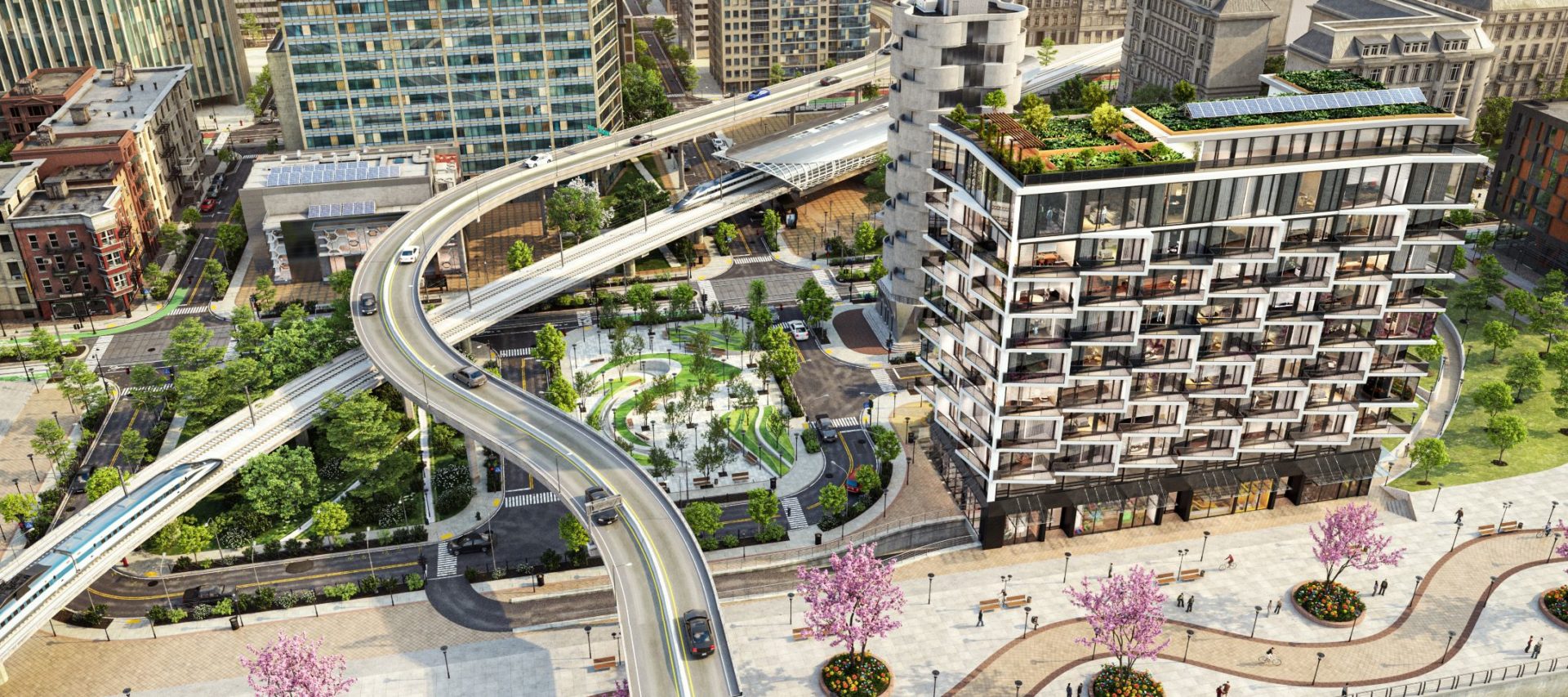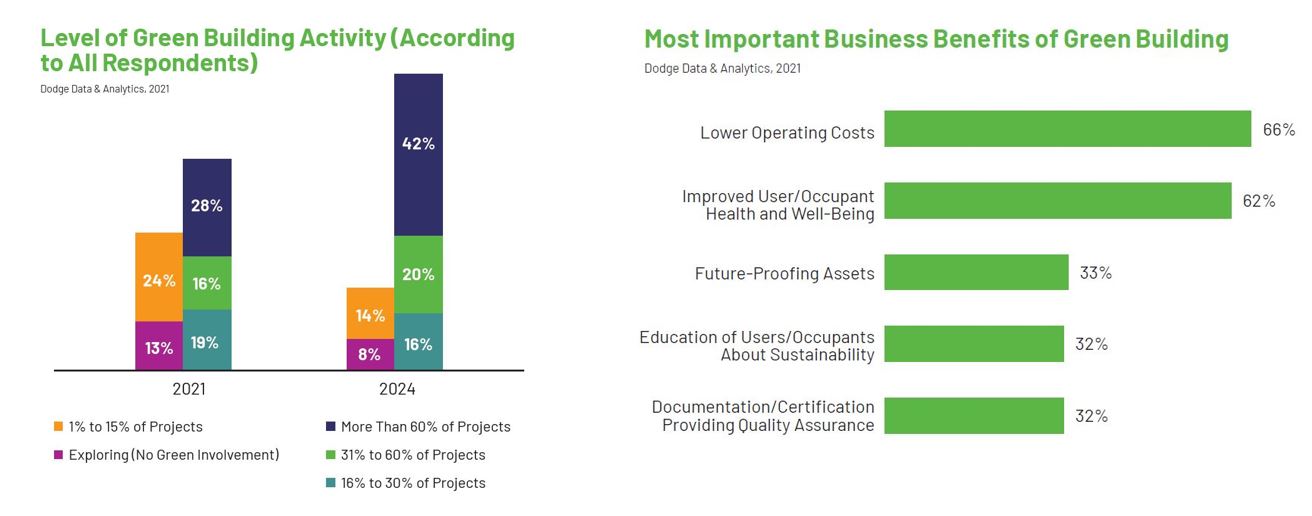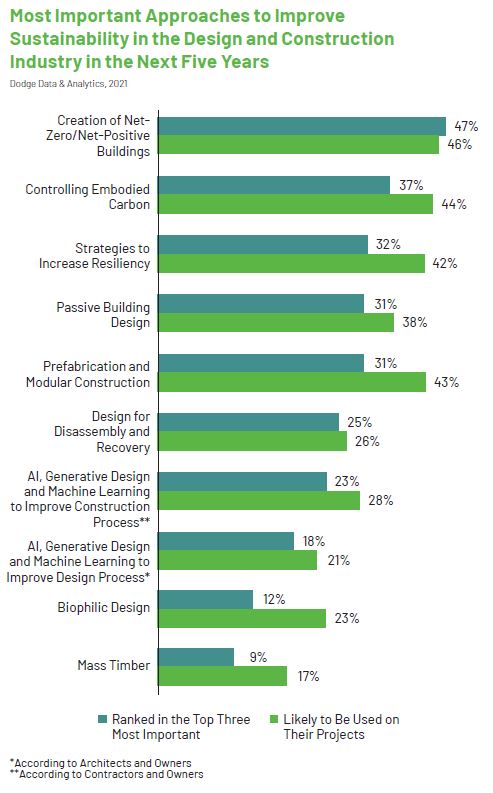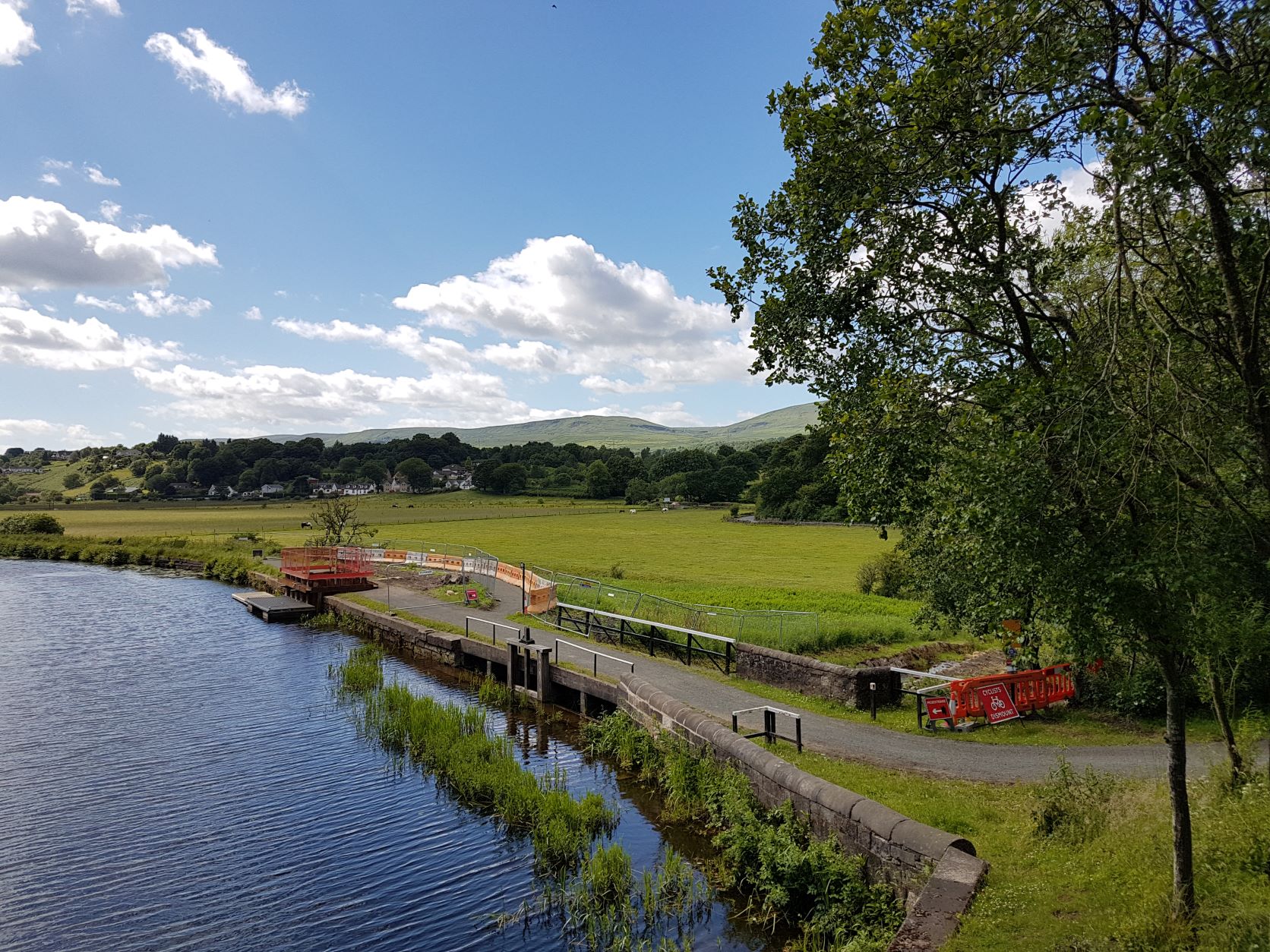By Jim Lynch

November 2021 is a watershed moment for increasing global collaboration to preserve our planet. The 26th UN Climate Change Conference of the Parties (COP26) is underway in Glasgow with government officials and private sector leaders discussing accelerated action to meet and exceed the legally binding targets of the Paris Agreement. In parallel with COP26, the Sustainable Innovation Forum (SIF) brings global business leaders, including Autodesk, to Glasgow to forge the cross-sector partnerships needed to make a net-zero economy a reality.
From an industry perspective, the findings in the World Green Building Trends 2021 SmartMarket Report are encouraging. The building industry—responsible for nearly 40% of greenhouse gas emissions* annually—is strengthening its commitment to sustainability. Dodge Data & Analytics surveyed over 1,200 building industry professionals worldwide and found that 42% of all respondents expect 60% of their projects to be green buildings by 2024.

Caption: Findings from the World Green Building Trends 2021 SmartMarket Report show green building projects up. Courtesy Dodge Data & Analytics.
The concept of “green building” includes the planning, design, construction, and operations of buildings with considerations made for energy use, water use, indoor environmental quality, material section and the building’s effects on its site. Green building is not only good for people and the planet–it’s good for business. According to the World Green Building Trends report, average operating cost savings within the first 12 months exceeding 10% and the five-year cost savings exceeding 16%.
While these findings are promising, the industry must work together to accelerate the pace of change and leverage technology solutions at scale. Three clear business strategies, when enabled by technology, can help companies realize the value of sustainability.
Strategy 1: Total Carbon Management

Caption: Nearly half of respondents said net zero and net positive buildings are the “most important way to improve the sustainability of the design and construction industry”. Courtesy Dodge Data & Analytics.
Now more than ever, the building industry is addressing the impact of the built environment holistically through total carbon management. They’re taking action to reduce emissions for both operational and embodied carbon. On the operational side, designers and engineers use energy modeling to make choices about lighting, rooflines, building orientation, and other design elements, with the goal of delivering a structure that consumes less energy. Nearly half of respondents in the green building survey said net zero and net positive buildings are the “most important way to improve the sustainability of the design and construction industry.”
But for too long, conversations about net zero have focused on the energy sources that power a building. Often overlooked are the emissions generated by the materials used during construction—what’s known as embodied carbon. So perhaps most encouraging is evidence that the needle is moving in this category too. In the green building report, controlling embodied carbon was ranked the second most important sustainability practice, with one-third of respondents already measuring embodied carbon in their projects. Until recently, those assessments were nearly impossible. Now, with the Embodied Carbon in Construction Calculator, or EC3, designers have a free, open-source tool that provides transparency about the impact of design and material procurement.
Listen in on Autodesk leaders talking about green construction at SIF.
Strategy 2: Resilience
Even if the world acts at COP26 to more aggressively slow greenhouse gas emissions, climate change is inevitable. The devastating wildfires, floods, droughts, and hurricanes we’ve all grown accustomed to seeing on the news will continue. The world needs new and upgraded buildings and systems that can withstand and respond to our changing environment.
About a third of respondents in the green building survey identified resilience as a key climate change strategy, and technology can accelerate efforts to achieve that goal. Last month, Autodesk introduced cloud-based tools from Innovyze and Spacemaker, and a new solution from our partnership with Esri, to drive more sustainable and resilient project outcomes for communities, buildings, and infrastructure.
Europe’s first ever “smart canal” is another example of what’s possible with technology. In an area north of Glasgow, frequent flooding prevented the land from being developed for regeneration and economic development.
To solve the seemingly unsolvable, AECOM teamed up with Innovyze, acquired by Autodesk this year, to create digital twin technology that mitigates flood risk. Live meteorological forecasting data and sensors enable real-time surface water management. When a storm is forecast, the system automatically lowers canal water levels to allow for drainage while keeping the canal navigable. By applying innovation to an age-old problem, the city of Glasgow now has a resilient place to accommodate population growth.
Listen in on Autodesk and AECOM leaders discuss resilient infrastructure and the Scottish canal at SIF.
 Caption: Innovyze and AECOM developed Europe’s first “smart canal” system north of Glasgow.
Caption: Innovyze and AECOM developed Europe’s first “smart canal” system north of Glasgow.
Strategy 3: Circularity
The third business strategy is circularity, a zero-waste mindset that focuses on the use and reuse of resources. In the context of building design and construction, circularity is emerging as a realistic goal with the rise of building information modeling (BIM). BIM is more than 3D modeling of a building—it’s an intelligent process for documenting every fine detail in a structure and surrounding area. When each component can be traced, from the nuts and bolts to a complete HVAC system, builders can disassemble and reuse materials, rather than throwing away the old and using limited natural resources to create anew.
Every building can become a “material bank,” a place that stores valuable materials and components that can be withdrawn and reapplied at a later day or when the building is no longer viable. But to fully realize a circular economy, a high-functioning ecosystem is needed to support the designing, building, buying, and selling of reusable materials across a complex network of stakeholders. Circularity is just one example of the importance of cross-industry partnerships and collaboration in the effort to slow climate change.
Partnering for a better future
The good news is we’re seeing these partnerships forming, growing, and making headway. In September, we joined the World Business Council for Sustainable Development (WBCSD), a global organization of large companies working together to transform our economy to support sustainability. We signed the We Mean Business Coalition letter, along with over 600 businesses, urging G20 and COP26 leaders to go “all in” to limit global temperature rise to 1.5 degrees Celsius. And we joined our partners in the architecture industry by signing onto to the COP26 Communique, urging specific actions to reduce the impact of the built environment.
Listen in as Autodesk and other technology leaders talk about big tech and climate change at SIF.
These partnerships leave me more hopeful than ever that the industry will reimagine a more sustainable future. Sustainability is becoming a policy imperative for governments and a moral imperative for our customers. In this pivotal moment and beyond, we stand ready to partner with public and private sectors alike, working together to build a better world.
To learn more about the wide-ranging efforts to combat climate change:
- Download the World Green Building Trends Report
- Visit Autodesk’s COP26 landing page
- Register to attend the Sustainable Innovation forum virtually
*Source: 2020 Global Status Report for Buildings and Construction